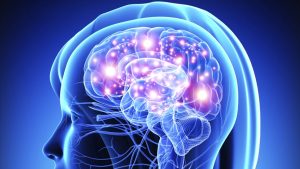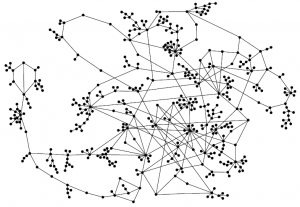Self Regulating the Brain and Neurofeedback

With neurofeedback now going mainstream1)http://www.newsweek.com/neurofeedback-brain-regulation-neuroscience-457492 jQuery("#footnote_plugin_tooltip_6504_1").tooltip({ tip: "#footnote_plugin_tooltip_text_6504_1", tipClass: "footnote_tooltip", effect: "fade", fadeOutSpeed: 100, predelay: 400, position: "top right", relative: true, offset: [10, 10] }); it’s important to take a closer look at it’s underlying mechanics. Neurofeedback works by reading electrical activity of the surface of your brain scalp with EEG(electroencephalography). This data is in turn fed to a computer and represented visually or auditory. The brain learns what the reward signals are and over time works to modulate itself according to the feedback given to it.
Neuroplasticity
The brain is able to physically reorganize itself to form to neural connections throughout its lifetime. Through neuroplasticity the brain is constantly getting shaped as we experience, adapt, and learn.
neurons that fire together, wire together

Complexity
Self organization and self regulation are a fundamental part of brain operation. Complex systems like the brain self organize, are open, and constantly exchange information across boundaries. Brain doesn’t only process information, it also generates information. Complex systems are defined by their nonlinearity and it’s behavior cannot be predicted solely on the interactions of its lower level components. The behavior of the brain as a complex system cannot be predicted by the sum of the local interactions of it’s neurons. Brain waves organize in a way that show self similarity over time. The fluidity of brain processes depends on evolving complexity. Neurofeedback seeks to tune brain oscillations to achieve a balance between network flexibility and stability.2)http://journal.frontiersin.org/article/10.3389/fncom.2016.00020/full jQuery("#footnote_plugin_tooltip_6504_2").tooltip({ tip: "#footnote_plugin_tooltip_text_6504_2", tipClass: "footnote_tooltip", effect: "fade", fadeOutSpeed: 100, predelay: 400, position: "top right", relative: true, offset: [10, 10] });
Phase Resets
One study showed that network resets in the medial prefrontal cortex of rats correlated with letting go of prior beliefs in favor of exploratory behavior. 3)http://science.sciencemag.org/content/338/6103/135 jQuery("#footnote_plugin_tooltip_6504_3").tooltip({ tip: "#footnote_plugin_tooltip_text_6504_3", tipClass: "footnote_tooltip", effect: "fade", fadeOutSpeed: 100, predelay: 400, position: "top right", relative: true, offset: [10, 10] }); There was an updating of the belief system in these rats. It reflected a network switch to a state of instability, which then diminishes as the new stable representations are formed.
Brain Structures
The [Precuneus], anterior cingulate, and angular gyri are thought to control self-referential thinking. PET scans in one Danish study 4)H. Lou, B. Luber, M. Crupain, et al. Parietal cortex and representation of the metal self. Proceedings of the National Academy of Science 2004; 101:6827-6832. The effective stimulation had a latency of 160ms jQuery("#footnote_plugin_tooltip_6504_4").tooltip({ tip: "#footnote_plugin_tooltip_text_6504_4", tipClass: "footnote_tooltip", effect: "fade", fadeOutSpeed: 100, predelay: 400, position: "top right", relative: true, offset: [10, 10] }); showed increased activation in the left prefrontal cortex, medial precuneus, and posterior cingulate regions.
References [ + ]
1. ↑ http://www.newsweek.com/neurofeedback-brain-regulation-neuroscience-457492
2. ↑ http://journal.frontiersin.org/article/10.3389/fncom.2016.00020/full
3.
↑
http://science.sciencemag.org/content/338/6103/135
4.
↑
H. Lou, B. Luber, M. Crupain, et al. Parietal cortex and representation of the metal self.
Proceedings of the National Academy of Science
2004; 101:6827-6832. The effective stimulation had a latency of 160ms
function footnote_expand_reference_container() { jQuery("#footnote_references_container").show(); jQuery("#footnote_reference_container_collapse_button").text("-"); } function footnote_collapse_reference_container() { jQuery("#footnote_references_container").hide(); jQuery("#footnote_reference_container_collapse_button").text("+"); } function footnote_expand_collapse_reference_container() { if (jQuery("#footnote_references_container").is(":hidden")) { footnote_expand_reference_container(); } else { footnote_collapse_reference_container(); } } function footnote_moveToAnchor(p_str_TargetID) { footnote_expand_reference_container(); var l_obj_Target = jQuery("#" + p_str_TargetID); if(l_obj_Target.length) { jQuery('html, body').animate({ scrollTop: l_obj_Target.offset().top - window.innerHeight/2 }, 1000); } }Source:

